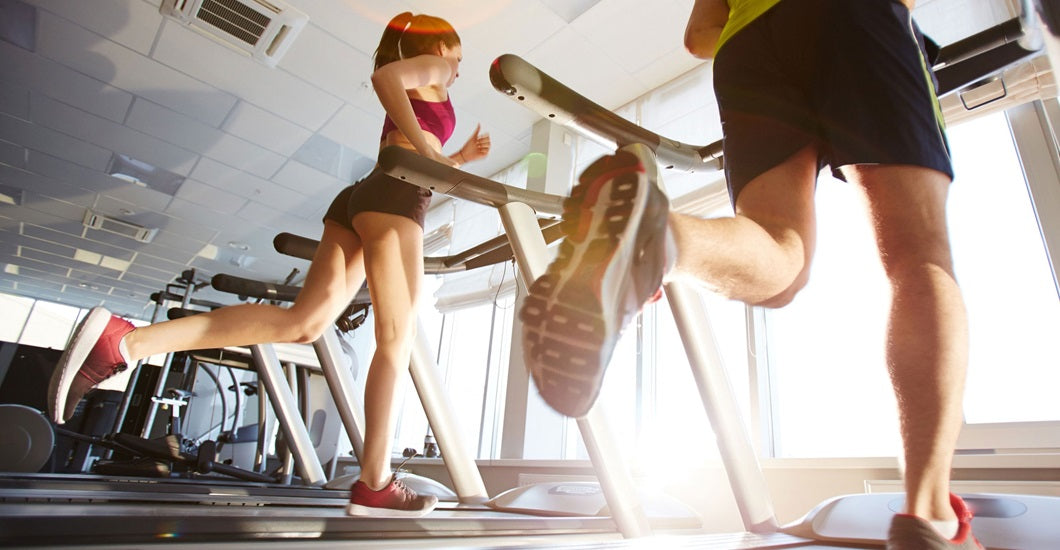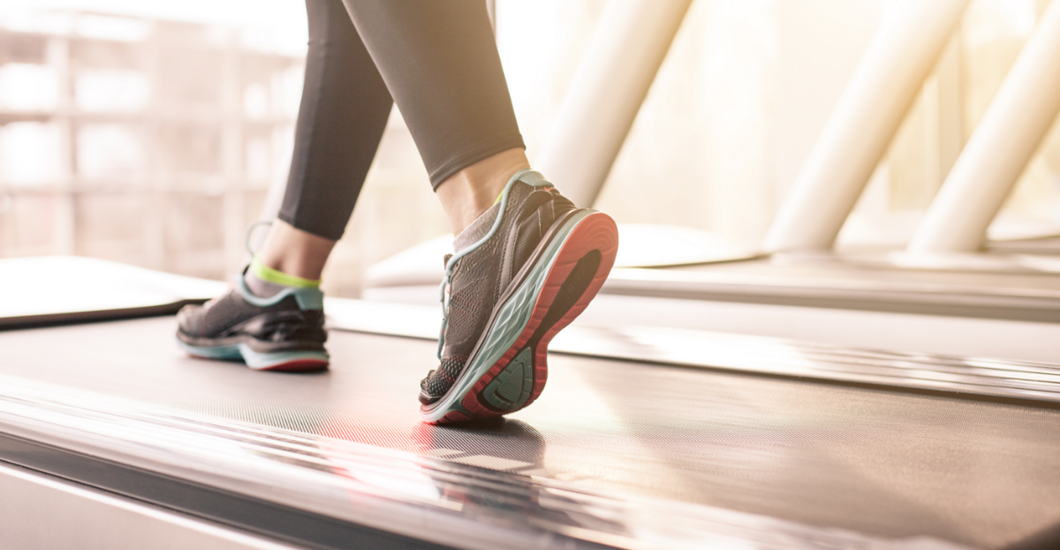In recent years, treadmill running has witnessed a remarkable surge in popularity among fitness enthusiasts and avid runners alike. Treadmills are popular with runners because they provide a dependable option for indoor running. They also allow runners to maintain their training routine regardless of the weather. Can you train for a marathon on a treadmill?
This question is not only relevant but also holds paramount importance, as marathon running requires meticulous preparation, endurance, and dedication. Achieving success in a marathon event hinges on a comprehensive training regimen, regardless of the training environment. Marathon runners need to know about treadmill training and how it helps their journey. This guide explores using treadmills for marathon training, offering tips to help people reach their marathon goals.
Benefits of Treadmill Training for Marathons
Convenience and Accessibility
- Unparalleled convenience:
Treadmills offer a readily available option for running, eliminating the need to plan routes or travel to a specific location.
- Round-the-clock access:
Treadmills are available for use at any time, allowing runners to fit their training into their schedule, regardless of daylight hours.
- Elimination of external factors:
Say goodbye to obstacles like traffic, stoplights, or uneven sidewalks, ensuring a hassle-free running experience.
Climate and Safety Considerations
- Shelter from the elements:
Treadmill running shields you from extreme weather conditions, making it ideal for training in rain, snow, or scorching heat.
- Enhanced safety:
Minimize the risk of accidents associated with outdoor running, such as tripping on uneven terrain, encountering aggressive dogs, or facing traffic hazards.
- Allergy and pollution management:
Indoor running can be a boon for those with allergies or respiratory issues, as it reduces exposure to allergens and air pollution.
Controlled and Consistent Terrain
- Customized terrain settings:
Treadmills allow you to adjust speed, enabling you to simulate various terrains like hills or flats to meet specific training goals.
- Enhanced muscle memory:
The consistent, cushioned surface of a treadmill can lead to reduced impact on joints, facilitating muscle memory development and injury prevention.
- Ideal for tempo and interval training:
Treadmills provide a controlled environment for precise pacing and interval workouts, aiding in improved performance.
Enhanced Data Tracking and Analytics
- Real-time performance monitoring:
Treadmills typically come equipped with built-in monitors that provide instant feedback on distance, pace, heart rate, and calories burned.
- Data retention and analysis:
Many treadmills, including DeerRun Smart Treadmills, allow users to save workout data, aiding in long-term progress tracking and adjustments to training plans.
- Improved goal setting:
Access to detailed analytics can help runners set and achieve personalized goals, enhancing motivation and accountability.
Incorporating these benefits into your marathon training plan can significantly contribute to your success and help you become a more efficient and prepared marathon runner.

Creating an Effective Marathon Training Plan on a Treadmill
Creating a specific marathon training plan on a treadmill requires tailoring the program to your individual fitness level, goals, and available time. Here's a sample 16-week training plan to help you prepare effectively for a marathon using a treadmill. Please note that you should adjust the plan based on your fitness and progress.
Weeks 1-4: Building Endurance and Base Mileage
Day 1: Easy Run - 4 miles at a comfortable pace.
Day 2: Cross-training (e.g., cycling, swimming, or strength training).
Day 3: Long Run - 6 miles at a conversational pace.
Day 4: Interval Training - 3 miles with 30-second sprints and 90-second recovery periods (repeat 6 times).
Day 5: Rest or gentle yoga.
Day 6: Easy Run - 4 miles at a comfortable pace.
Day 7: Long Run - 8 miles at a conversational pace.
Weeks 5-8: Increasing Intensity and Speed
Day 1: Easy Run - 5 miles at a comfortable pace.
Day 2: Cross-Training.
Day 3: Long Run - 10 miles at a conversational pace.
Day 4: Hill Training - 4 miles with incline variations.
Day 5: Rest or yoga.
Day 6: Easy Run - 5 miles at a comfortable pace.
Day 7: Long Run - 12 miles at a conversational pace.
Weeks 9-12: Focusing on Pace and Distance
Day 1: Easy Run - 6 miles at a comfortable pace.
Day 2: Cross-Training.
Day 3: Long Run - 14 miles at a conversational pace.
Day 4: Tempo Run - 6 miles at a faster, marathon race pace.
Day 5: Rest or yoga.
Day 6: Easy Run - 6 miles at a comfortable pace.
Day 7: Long Run - 16 miles at a conversational pace.
Weeks 13-16: Tapering and Final Preparations
Day 1: Easy Run - 6 miles at a comfortable pace.
Day 2: Cross-Training.
Day 3: Long Run - 18 miles at a conversational pace.
Day 4: Tempo Run - 8 miles at a faster, marathon race pace.
Day 5: Rest or yoga.
Day 6: Easy Run - 4 miles at a comfortable pace.
Day 7: Marathon Simulation - 20 miles at a conversational pace.
In the last 2-3 weeks leading up to your marathon, gradually reduce your mileage and focus on rest and recovery. Remember to listen to your body, stay hydrated, and maintain a balanced diet throughout your training.
This marathon training plan provides a structured approach to building endurance, speed, and mental resilience on a treadmill. Make adjustments as necessary, and consult with a coach or trainer for personalized guidance.
Transitioning to Outdoor Running
Gradual Integration of Outdoor Runs
- Start with shorter outdoor runs:
Begin by incorporating outdoor runs that are shorter than your typical treadmill sessions.
- Maintain treadmill consistency:
Continue to use the treadmill for some of your workouts, gradually increasing outdoor run frequency.
- Alternate indoor and outdoor runs:
Mix treadmill and outdoor runs during the transition to ease your body into the change.

Adjusting to Varying Terrain and Weather Conditions
- Choose suitable routes:
Pick running routes that match your race conditions, whether it's a flat road, hilly terrain, or a mix of both.
- Be prepared for weather changes:
Dress appropriately for varying weather conditions, including hot, cold, rainy, or windy days.
- Practice adaptability:
Embrace the unpredictability of outdoor running, including dealing with wind resistance, uneven surfaces, and changing temperatures.
- Mind your pacing:
Be aware that outdoor terrain can affect your pacing, and it may take time to adjust to different gradients and surfaces.
- Safety first:
Ensure visibility with reflective gear when running in low-light conditions, and always follow traffic rules.
The transition to outdoor running requires a gradual approach to adapt your body to changing conditions, ensuring a successful shift from treadmill training to the actual race environment.
Conclusion
In the quest to answer the age-old question, "Can You Train for a Marathon on a Treadmill?" Treadmill training offers a wealth of benefits while presenting certain challenges. This guide explains how a treadmill can be versatile, and convenient, and provide a controlled environment for marathon preparation.
A treadmill is useful for marathon training, but it's important to have a balanced approach. Combining the strengths of treadmill running with outdoor training, when feasible, can optimize your preparedness for the actual race. Treadmill training gives you stamina, mental strength, and helpful information for your marathon journey.
Marathon success relies on a well-rounded routine including outdoor practice, adapting to different terrains and weather, and building mental strength. Not just about running, but about embracing the challenges and joys of the race itself.
So, to answer the question: Yes, you can train for a marathon on a treadmill, but it's the harmonious blend of both indoor and outdoor training that will truly propel you across the finish line.
Tailor your training to your needs, set realistic goals, stay adaptable, and remember that, in the end, the journey is as important as the destination. Whether your marathon adventure unfolds on the treadmill, the open road, or a combination of both, it's a testament to your determination and commitment, and it's an experience that will undoubtedly change you as a runner and as an individual.






Leave a comment
All comments are moderated before being published.
This site is protected by hCaptcha and the hCaptcha Privacy Policy and Terms of Service apply.